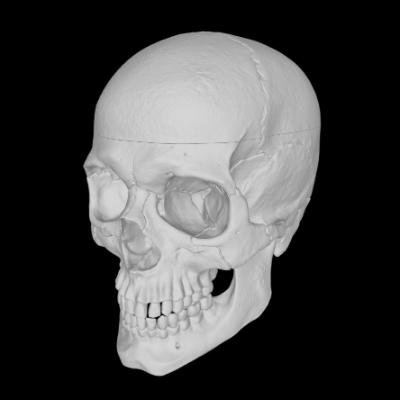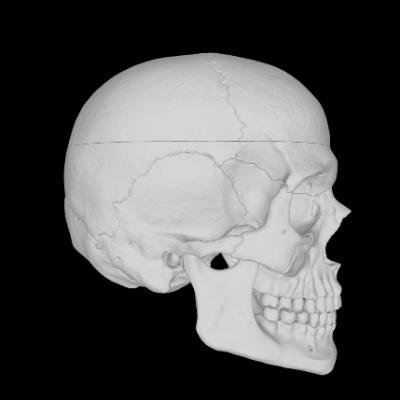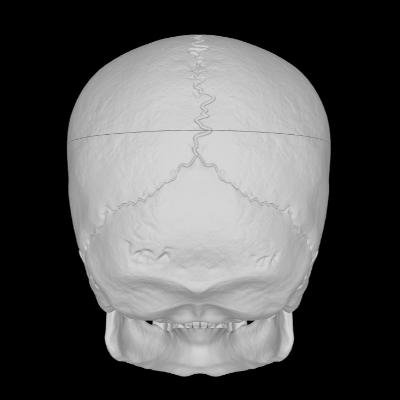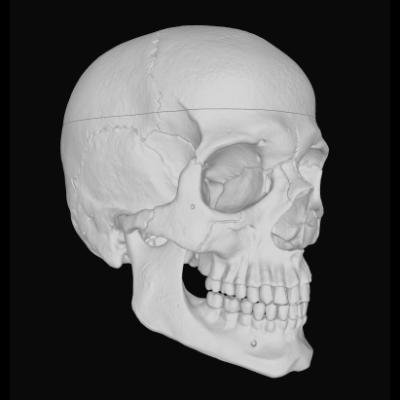Are you looking for a skull 3D model?? Then this is the right place for you. We have a wide variety of skull reference.
Contents
- 1 3D Human Skull Model Interactive
- 2 Understanding Different Types of The 3D Model of a Skull
- 2.1 Human Skull Anatomy 3D Model
- 2.2 New Anatomy Skull Model 15 Parts Human Anatomy Exploded Skull Det…
- 2.3 Skillssist Numbered Human Skull Model – Life Size Medical Quality…
- 2.4 2025 New Human Skull Model,3 Part With 2-Part Human Brain;Half Li…
- 2.5 Wellden Medical Anatomical Human Skull Model, 3-Part, Numbered, L…
- 2.6 2025 New Anatomy Exploded Skull Model,Human Medical Skull Model D…
- 2.7 breesky Human Skull Model for Anatomy, 15 Parts Human Anatomy Exp…
- 2.8 EVOTECH SCIENTIFIC Human Body, Skeleton, Heart, Half Size Skull w…
- 2.9 Human Skull and Brain Anatomy Model Life-Size with Cervical Verte…
- 2.10 ArtCreativity Anatomical Skull Puzzle for Kids – 17pc Human Skull…
- 2.11 QWORK Human Skull and Brain Anatomy Model, 11 Parts, Life Size, N…
- 2.12 Reference skull for artists
- 2.13 Mini Skull Anatomy Model for Studying – Human Skull Model, Small …
- 2.14 ENNAS 1:1 Resin Skull Head Model Simulation Skeleton Head Medical…
- 2.15 Upgraded Life Size Human Head Skull Anatomical Model with Laser-E…
- 2.16 Virtual skull model
- 3 Where to Find High-Quality Skull Anatomy 3D Models?
- 4 The Importance of Skull References for Artists
- 5 Interactive Features of 3D Skull Models
- 6 Applications of Skeleton Head 3D Model in Education and Medical Fields
- 7 Choosing the Right Skull 3D Model
- 8 Conclusion
- 9 Where to Buy Skull 3D Models Online
3D Human Skull Model Interactive
Skull 3D models represent a digital or physical representation of the human, intricately designed with precision and accuracy. Their significance spans multiple domains, including medicine, education, art, and archaeology, making them indispensable tools for professionals and students alike.

In the medical field, skull anatomy 3D models are invaluable for surgical planning, educational demonstrations, and patient consultations. Surgeons utilize these models to visualize complex anatomical structures, thus enhancing the precision of their operations. Medical students also benefit substantially, as they can study and manipulate these realistic models to understand cranial anatomy better.

Furthermore, in the realm of education, skull 3D models serve as effective teaching aids. They enable educators to present the intricate details of human anatomy visually, facilitating a more interactive learning experience. Instead of relying solely on textbook illustrations, students engage with three-dimensional representations, leading to improved comprehension and retention of anatomical knowledge.

Art and design also benefit from skull 3D models, as artists and animators use them to create lifelike sculptures and animations. These models inspire creativity and provide a foundation for artistic endeavors, showcasing the fusion of artistry and technology. Additionally, in archaeology, skull 3D models assist researchers in reconstructing ancient civilizations, offering insights into human evolution and cultural practices.

Skull 3D models represent a convergence of innovation and practicality across diverse fields, underscoring their vital role in contemporary practices. With advancements in 3D modeling technology, the potential applications of these models are continuously expanding, promising exciting future developments.

Understanding Different Types of The 3D Model of a Skull
When it comes to 3D skeleton head, various types are available, each serving different purposes and audiences. The most common categories include anatomical skull models, artistic representations, and interactive models. Understanding these distinctions is crucial for selecting the right model based on individual requirements.
Human Skull Anatomy 3D Model
Anatomical skull models are primarily used in educational and medical settings. These models are highly detailed and designed to replicate the human skull’s structure closely. They often include distinct features such as sutures, foramina, and major cranial regions, making them ideal for anatomy students, medical professionals, and researchers. These models are typically employed in classrooms and clinics to provide a clear understanding of the skull’s anatomy, its functions, and its relevance to surrounding structures.
Reference skull for artists
On the other hand, artistic representations of skulls can vary widely in style and purpose. Artists and designers often create stylized skull models that emphasize certain aesthetic elements rather than strict anatomical accuracy. These models are popular in creative industries, including film and video game development, where a unique interpretation of a skull can enhance character design or set pieces. The artistic approach allows for flexibility in design, with variations that can include various textures, colors, and forms that appeal to a broader audience.
Virtual skull model
Lastly, interactive skull 3D models have gained popularity due to advancements in technology. These models often utilize augmented reality (AR) or virtual reality (VR) formats, allowing users to engage with the skull in a more immersive way. Ideal for educational tools and presentations, interactive models can offer features like detailed annotations, selective highlighting of parts, and even simulated movements, making the learning experience more dynamic.
Each type of skull 3D model fulfills specific needs, so understanding the differences can help buyers make informed decisions relevant to education, artistry, or interactive engagement.
Where to Find High-Quality Skull Anatomy 3D Models?
In the pursuit of high-quality skull 3D models, this platform offers a range of options.
- 15 Piece Human Skull Model: This 15 parts mini human skull has every detail that the big models have, including the hole…
- Highly Detailed Anatomical Skullv: It visually shows the bones structure, texture, articulating mandible, eye sockets, s…
- Easy To Reassemble: Come with an illustrated guide, complete with general knowledge and questions. And this didactic sku…

- 【PREMIUM NUMBERED HUMAN SKULL MODEL】: Our anatomically accurate, life-size skull model is meticulously numbered, making …
- 【MEDICAL QUALITY AND LASTING】: Crafted from high-quality material, our skull model guarantees medical-grade quality and …
- 【1:1 LIFE-SIZE MODEL】: Designed to replicate an actual human skull in size, our model provides an authentic and immersiv…

- 👫【Small Skull with Brain】:1:2 large exquisite small skull model,Designed by 3D engraver and professor of medical school….
- 👫【Healty Material Quality】: Human Skull Models with Brain, made in non-toxic durable PVC , Easy to clean.Easy to clean.M…
- 👫【Multi-scenario application:】: anatomy model is assembled with the utmost attention to detail. This anatomy model is pe…

The Importance of Skull References for Artists
For artists and animators, understanding the intricacies of human anatomy is paramount to producing lifelike representations. By having access to detailed and accurate skull anatomy 3D models, artists can enhance their work significantly. These models allow for a comprehensive study of proportions and anatomical relationships that are often overlooked in traditional drawings.
The skull is a complex structure comprised of numerous bones and features that are crucial for determining the overall shape of the head. When artists utilize skull references, they can grasp the way these components interconnect, allowing them to create more realistic and proportionate figures. This understanding extends beyond mere representation; it also informs the articulation of expressions and the nuances of movement, leading to a more dynamic portrayal.
Moreover, engaging with 3D skull models enables artists to analyze the form from various angles, enriching their perception of spatial relationships. This can be particularly beneficial for digital sculptors and animators, who often rely on three-dimensionality to create convincing characters. By manipulating these models, artists are better equipped to translate the intricate details of bone structure and silhouette into their work, contributing to the overall realism.
Interactive Features of 3D Skull Models
3D skull models have transformed the way students and artists engage with anatomical study and creative pursuits. One of the most compelling aspects of these models is their interactive features, which significantly enhance learning and artistic expression. Features such as rotation, zoom, and anatomical overlays provide users with the ability to examine structures from various perspectives, fostering a deeper understanding of cranial anatomy.
Rotational capabilities allow users to manipulate the model to view it from different angles. This is essential for grasping the complex shapes and relationships of cranial structures, which can be challenging to understand from traditional 2D images. Students can explore aspects like bone articulation and spatial arrangement, improving their observational skills and comprehension of anatomical intricacies.
Zoom functionality further enhances interactivity by enabling users to focus on specific areas of interest. For instance, artists can get a closer look at the nuanced features of the skull for accurate representation in their work. This capability is also beneficial for medical students who may require a detailed understanding of the skull’s features for their studies.
Applications of Skeleton Head 3D Model in Education and Medical Fields
Skull 3D models have revolutionized the way educators and medical professionals approach teaching and training in the fields of anatomy and surgery. Traditionally, anatomy education relied heavily on two-dimensional images in textbooks and static displays, limiting students’ understanding of complex structures and spatial relationships. With the introduction of 3D models, learners can engage in immersive experiences that enhance their comprehension and retention of anatomical knowledge.
In educational settings, 3D skull models facilitate a more interactive learning environment. Students can manipulate these models from various angles, allowing them to visualize internal structures, such as sinuses and foramina, which are often challenging to comprehend through flat images. Furthermore, instructors can use virtual simulations to demonstrate clinical scenarios, leading to a more engaging and effective learning experience. This hands-on approach is particularly beneficial in helping students develop critical thinking and spatial awareness skills, essential for future medical practice.
In the medical field, the applications of skull 3D models extend to surgical planning and simulations. Surgeons can utilize these models to better understand the patient’s unique anatomical features before performing intricate procedures. By having access to a 3D representation of the skull, medical professionals can devise tailored surgical strategies that minimize risks and enhance outcomes. Significant advances in preoperative planning have been observed, as surgeons are now able to visualize the surgical site in detail, ultimately leading to more precise interventions.
Moreover, educational institutions and medical facilities are increasingly employing virtual reality environments to further augment the learning experience. These settings provide an opportunity for trainees to practice surgical techniques in a risk-free atmosphere, thereby improving their skills before engaging with actual patients. The integration of skull 3D models into the educational and medical landscape showcases their undeniable value in enhancing both teaching methodologies and clinical practices.
Choosing the Right Skull 3D Model
When selecting a skull 3D model, it is essential to consider the specific requirements of your project. Whether the objective is academic study, 3D printing, or artistic reference, the choice of model can significantly impact the outcome. Therefore, a careful evaluation of several factors, including quality, detail level, and anatomical accuracy, is crucial.
The first criterion to consider is the quality of the model. High-resolution models often provide more lifelike details, which can be particularly beneficial for educational purposes. Look for skull models that boast a high polygon count, as this typically correlates with greater detail and realism. In contrast, lower-resolution models may be more suitable for projects that do not require intricate details, such as quick visual references or rough prototyping.
Next, it is vital to assess the level of detail within the skull 3D model. Depending on your intended use, you may need different features captured accurately. For anatomical studies, it is important to choose models that accurately depict key structures such as sutures, foramina, or other relevant features. Conversely, for artistic purposes, you might prioritize models that inspire creativity or emphasize specific lines and shapes.
Evaluating anatomical accuracy is another fundamental aspect. Ensure that the model is based on reliable references and has been developed or verified by specialists if it is being used for educational or research purposes. Authenticity will contribute significantly to the educational value if the skull model is used in a classroom or clinical setting.
In conclusion, selecting the appropriate skull 3D model hinges on properly identifying your project needs, along with a thorough assessment of quality, detail, and accuracy. Such diligence will ensure that the chosen model effectively serves its intended purpose, ultimately leading to more successful outcomes in your endeavor.
Conclusion
In summary, skull 3D models serve a versatile role across different sectors such as education, healthcare, and digital art. Their detailed accuracy and adaptability make them invaluable for various applications, from anatomical studies to creative projects. The advantages of using high-quality skull 3D models include enhanced visualization, better learning experiences, and the ability to create visually appealing content that corresponds with professional standards.
Where to Buy Skull 3D Models Online
To explore the extensive collection of skull 3D models available, this platform offers a curated selection that addresses a variety of needs, ensuring that you can find precisely what you are looking for, whether it is for academic, professional, or creative purposes.














